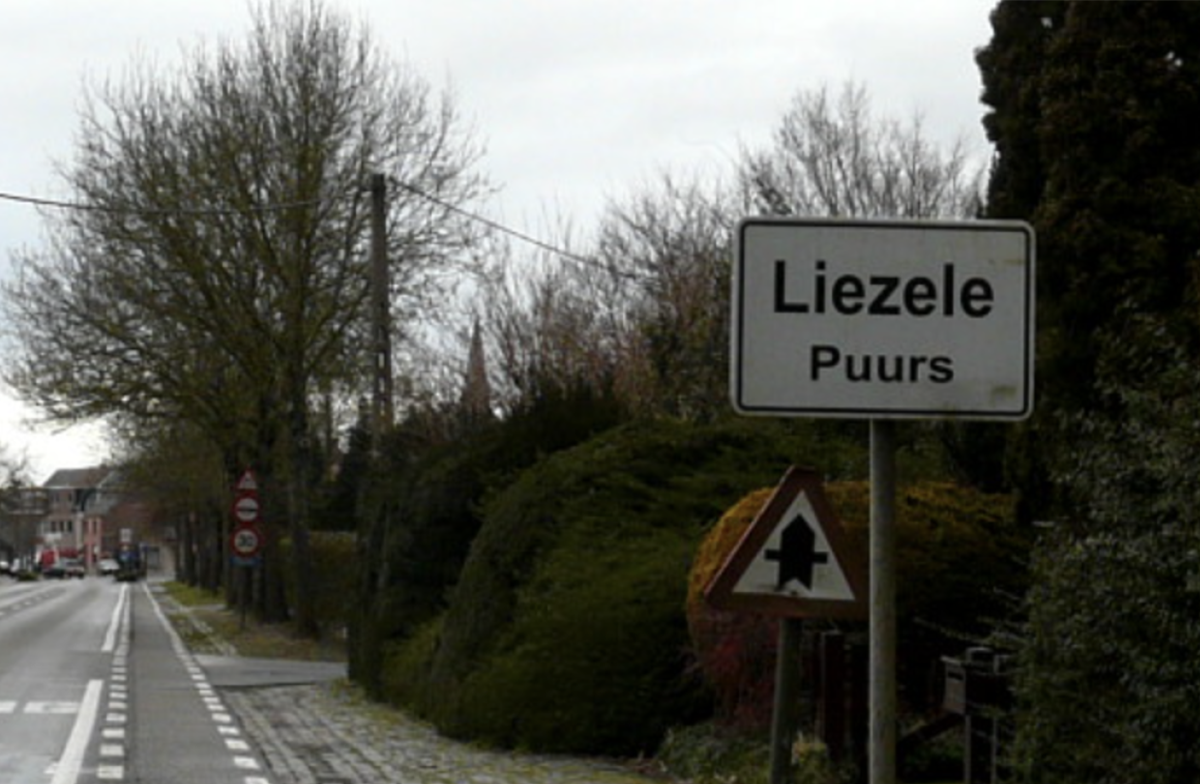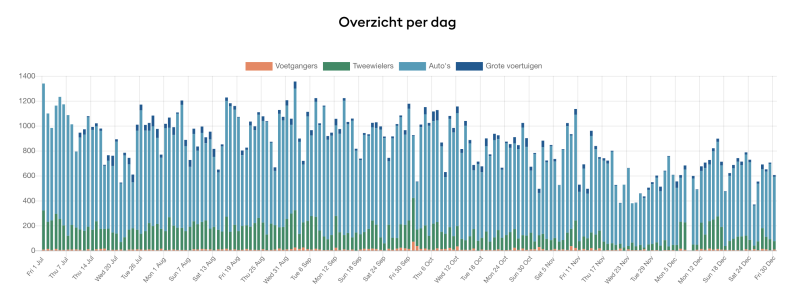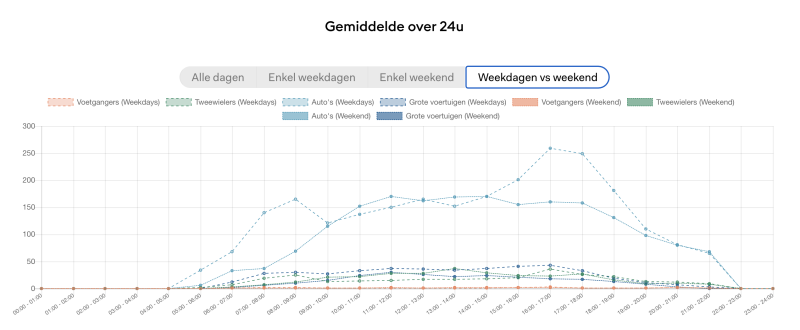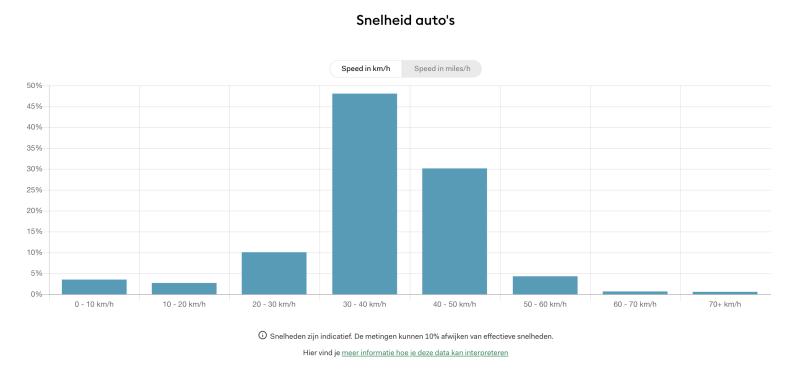Citizen Engagement in Liezele: lessons from a campaign
Liezele • Robert McIntosh 9 November 2023

The residents of Liezele were concerned about the safety and liveability of their village being negatively affected by traffic, so they joined forces in an attempt to bring about change. The residents sought to convince the municipal authorities to take action, using professional advice, stakeholder engagement and Telraam data. Their campaign offers an interesting case study to all who wish to bring about change.
Step 1: Finding common cause
When the coronavirus pandemic hit and the usual indoor gatherings were prohibited, residents of Liezele, a small village in central Flanders with about 2.000 inhabitants, spent more time in the street in search of safe social interaction. Out on the street, meeting new groups of neighbours, they soon realised they were talking about an issue that affected them all: mobility.
As it turned out, many individual residents of Liezele were concerned about the traffic situation in their village, and particularly its negative effects on safety and liveability. In the past, several of the residents had individually flagged concerns about the deteriorating traffic situation to the municipality of Puurs-Sint-Amands, to which Liezele belongs. However, outside on the street, a more collective approach materialised. Several residents decided to join forces to convince their municipality to take action. A residents’ committee was born: “Liezele Verkeer” (or literally “Liezele Traffic”).
Working together: There is always strength in numbers and in broad consensus, especially when lobbying local governments. Working together will add weight to the demands you make towards local government.
Reach out to your neighbours, both in your street and in the wider neighbourhood. Ring doorbells, distribute leaflets, join local social media groups and organise informal roundtable talks. Listen to different views and concerns. Engage in conversation and try to find a shared vision.
Whom should you approach and how do you go about it? You'll find lots of inspiration here
Step 2: Don't reinvent the wheel
To achieve its aims and maximize pressure on policymakers, Liezele Verkeer planned on engaging as many local stakeholders as possible: from other residents to associations and business. As the residents’ committee did not have experience with participatory processes or expertise in stakeholder engagement, it decided to reach out for professional advice in March 2022. Specifically, they contacted Mobiel 21, a Belgian non-profit organisation that promotes sustainable mobility and specializes, among others, in local participation processes and in interaction between citizens and policymakers.
Professional advice: Consider getting advice from those who have done this before; a non-profit organisation, another campaign group, or you could consider putting some portion of funds available to hire professionals who can provide additional material support to focus your efforts.
Step 3: Engaging more stakeholders
Following the meeting, Liezele Verkeer started its stakeholder engagement. It reached out to more people in the village. A flyer was distributed widely in local mailboxes, informing locals that a residents’ committee had been launched, that it aimed to improve the traffic situation in the village and that all inhabitants were invited to raise additional traffic issues or share ideas for improvement. Respondents could participate via mail, social media or when meeting one of the committee members in-person. The committee also placed informal road signs along the busy roads leading into the village centre to ask drivers to mind their speed. It also hosted a booth at the yearly Liezele fair to inform even more people about its aims and activities.
The flyer and accompanying request for input helped Liezele Verkeer to not only increase engagement, but also to check if their concerns and complaints were shared by the broader community. This way, they were able to draw up a summary of priority issues and potential solutions they wanted the municipality to address. These issues included speeding, through-traffic (especially heavy trucks), poor pedestrian and cycling infrastructure, to name a few.
Getting engagement: Make sure to get documented support for your campaign goals in the form of petitions, a letter-writing campaign, or even just photos of people participating at events. This will show the widespread support for the idea and ensure it is taken more seriously.
Step 4: Turning feelings and opinions into data, with Telraam
Next, Liezele Verkeer sought to quantify local residents’ feelings and opinions about the traffic situation. Zooming in with objective facts and figures to support subjective feelings and opinions was seen as a necessary step if the committee were to convince municipal authorities to intervene. To achieve that, three Telraam devices were installed in Liezele with support from the federal mobility campaign ‘All For Zero’. From June 2022 onwards, these devices started automatically mapping traffic streams into the village centre. After summer, a Telraam workshop was organised for the residents to help them understand and analyse the data.



Getting data: Personal feelings and preferences are important, but not everyone will agree. To demonstrate that your issues and conclusions are properly researched and valid, make sure you get as much data as possible. When it comes to traffic, there are easy ways to measure the volumes, speeds and directions of road users. Use this quantitative data test your assumptions and conclusions. Keep a data journal to list those data you consider to be the most relevant or striking.
Step 5: Reaching out to policymakers
In the meantime, Liezele Verkeer also reached out to the municipality. They shared the summary of priority issues identified via the flyer and requested a meeting. Mobiel 21 again supported the committee in preparing for this meeting, which took place in October 2022. During the meeting, committee members explained why they created Liezele Verkeer and which activities it had already undertaken, and they underpinned this with the data gathered so far from the Telraam devices. The committee stressed the link between traffic and liveability, using relevant studies and resources provided by Mobiel 21. Finally, the priority issues were presented alongside potential solutions, with the committee asking if plans already existed to deal with some of these issues.
Influencing the authorities: To achieve a change in policy, or to get funding for an intervention, you need to get decision-makers on your side, and therefore understand their priorities and any limitations. Work together with policy-makers and planners where possible, to get practical advice on what is reasonable and achievable, but also to inspire them to achieve more than they expect. Regular meetings can help build trust. Make sure to prepare yourself for such meetings, so your concerns and questions are not dismissed.
How can you prepare for such a meeting? What should you discuss? Get inspired here
Step 6: In politics, patience is key
After the meeting, the municipality put the issues and potential solutions on the municipal agenda, to be discussed by local policymakers, police representatives and civil servants.
A few months later, the municipality’s did eventually respond on each and every one of the priority issues and potential solutions. Unfortunately, the municipality indicated they would not be taking action at this stage, as they believed some of the issues would be solved by planned roadworks (to be executed only in the long term), but also concluding that some of the proposed solutions were not likely to be effective.
Naturally, this first response was disappointing to the Liezele Verkeer committee. Yet, this is not the end of the campaign, because a dialogue has been started, and a follow-up meeting has already been planned to iron out some of the disagreements between the committee and the municipality.
In politics, as always, change takes time and patience is key...
Be Persistent: Local planning decisions can often take a long time, and there are likely to be set-backs along the way. However, staff, administrations and circumstances do change, and the goal is to ensure that the right options are on the table when decisions need to be taken. If a campaign is well supported, consistent and a positive participant in discussions, opportunities will arise.
Even after a disappointing meeting, show local policy-makers that your campaign is alive and kicking. Make the mobility issues you wish to address the talk of the town. How? Get inspired here